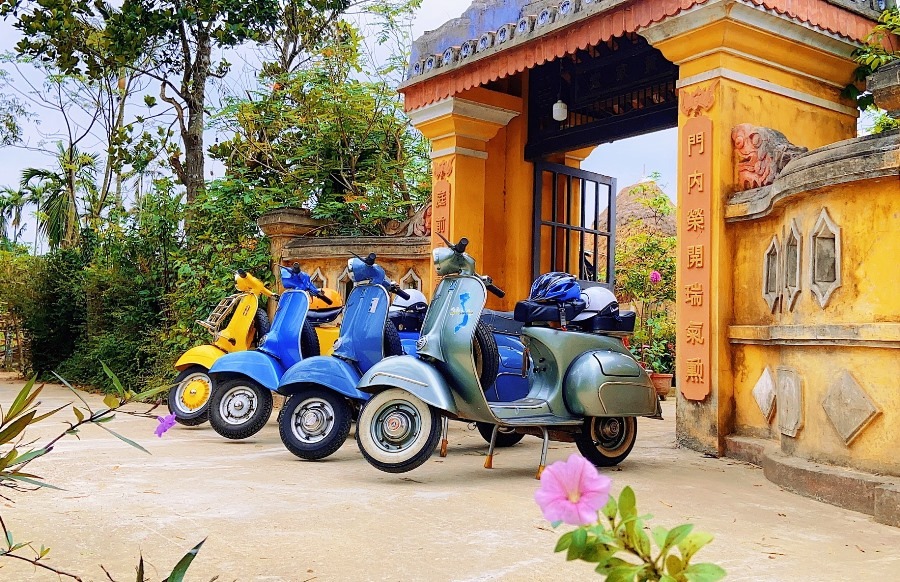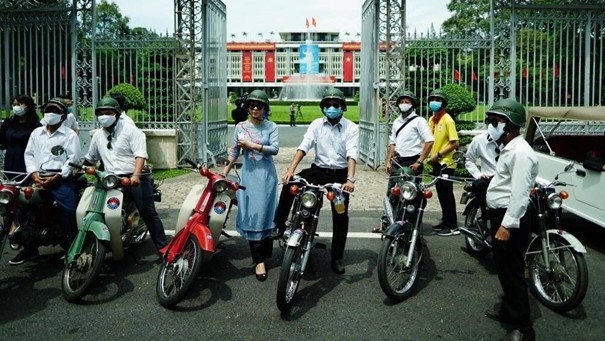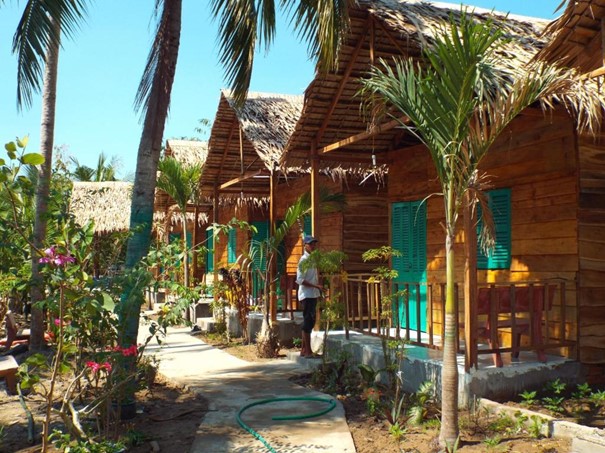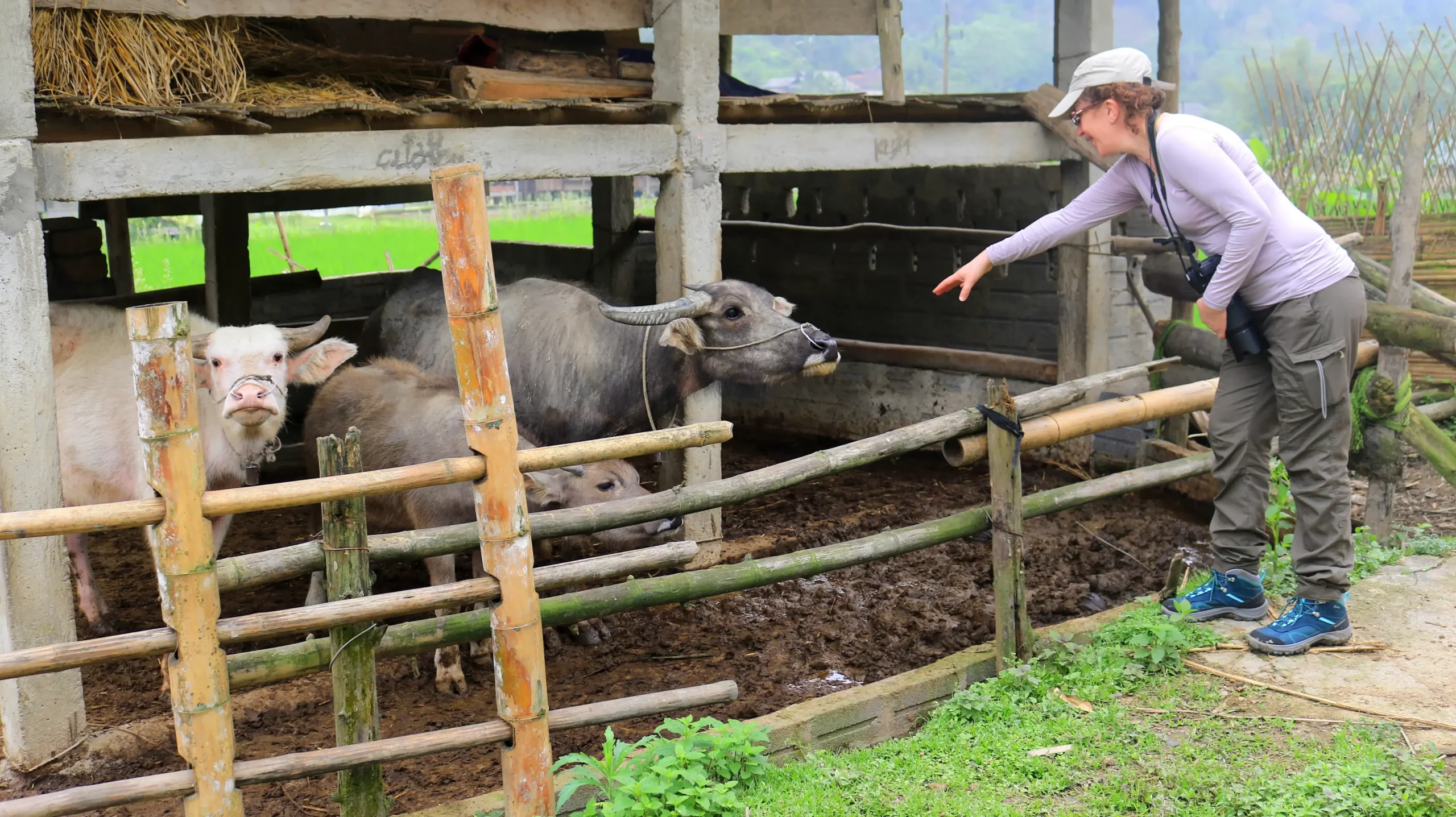Traveling opens our eyes to the world. Yet, it comes with a hidden cost: carbon emissions. The tourism industry accounts for roughly 8-10% of global greenhouse gas emissions, with transportation, accommodation, and activities all contributing to the tally. As climate change accelerates, reducing our travel carbon footprint isn’t just a noble idea—it’s a necessity.
Fortunately, you don’t have to stay home to make a difference. If you’ve ever wondered what travel emissions mean, why they matter, and how you can reduce your carbon footprint without sacrificing the joy of travel, let’s find out all in this article from Travel Sense Asia.
What’s the carbon footprint in travel?
Imagine your trip as a story, and your carbon footprint as the shadow it casts. Every plane you board, every car you drive, every hotel air conditioner you crank up releases carbon dioxide (CO₂) and other greenhouse gases into the atmosphere. That’s your travel carbon footprint—a measure of the emissions tied to your journey.
Where did this idea spring from? Back in the 1990s, scientists and environmentalists started tracking how human activities—like transportation and energy use—contribute to climate change. Travel, being a big player in global emissions, quickly landed on the radar. Think of it as the environmental bill for your trip, and while it’s not something we can completely avoid, we can definitely trim it down.

Source | Internet
Why bother reducing your carbon footprint in travel?
“Why should I care? I’m just one person with a suitcase,” you might ask. It’s a valid thought! But here’s the thing: all those solo trips add up. Planes, for instance, are big players in the emissions game (they account for a notable slice of global CO₂, per the International Air Transport Association). Toss in cars zipping through cities, trains chugging along, and hotels glowing all night, and you’ve got a collective footprint that shapes the world we explore. Reducing it isn’t about feeling bad—it’s about keeping that world worth exploring. Cleaner skies, thriving forests, and stable weather mean more postcard-perfect destinations for years to come.
Beyond the planet, there’s a perk for you: greener travel often unlocks richer experiences. Picture pedaling through a vineyard instead of speeding by in a taxi, or savoring a meal from a local market instead of a chain restaurant. It’s less about giving things up and more about swapping them for something deeper.

Source | Internet
How to reduce your carbon footprint while traveling?
Let’s get to the good stuff—how to travel lighter on the Earth without losing the joy. Here’s a detailed rundown of practical, clever ways to cut your carbon footprint:
1. Consider your travel transportation wisely
How you move matters more than you’d think—it’s the backbone of your trip’s carbon story.
- Opt for trains over planes when possible: Trains are the gentle giants of travel. They sip fuel compared to planes, which guzzle it, especially during takeoff and landing. In places like Europe or Japan, you can glide between cities on high-speed rails, sipping tea while mountains roll by—no security lines, no turbulence. It’s not just eco-friendly; it’s a vibe.
- Fly smart if you must: Sometimes a flight’s the only way—say, crossing an ocean. Pick nonstop routes to skip extra takeoffs and look for airlines flying newer planes built to burn less fuel. Tools like Google Flights can highlight your greenest options.
- Join walking or bike tours: In cities or countryside, guided walks or e-bike tours (charged with minimal energy) let you soak in the sights—think weaving through Hanoi’s Old Quarter or pedaling along Ninh Binh’s rice paddies. It’s intimate, emission-free, and way more fun than a stuffy bus.
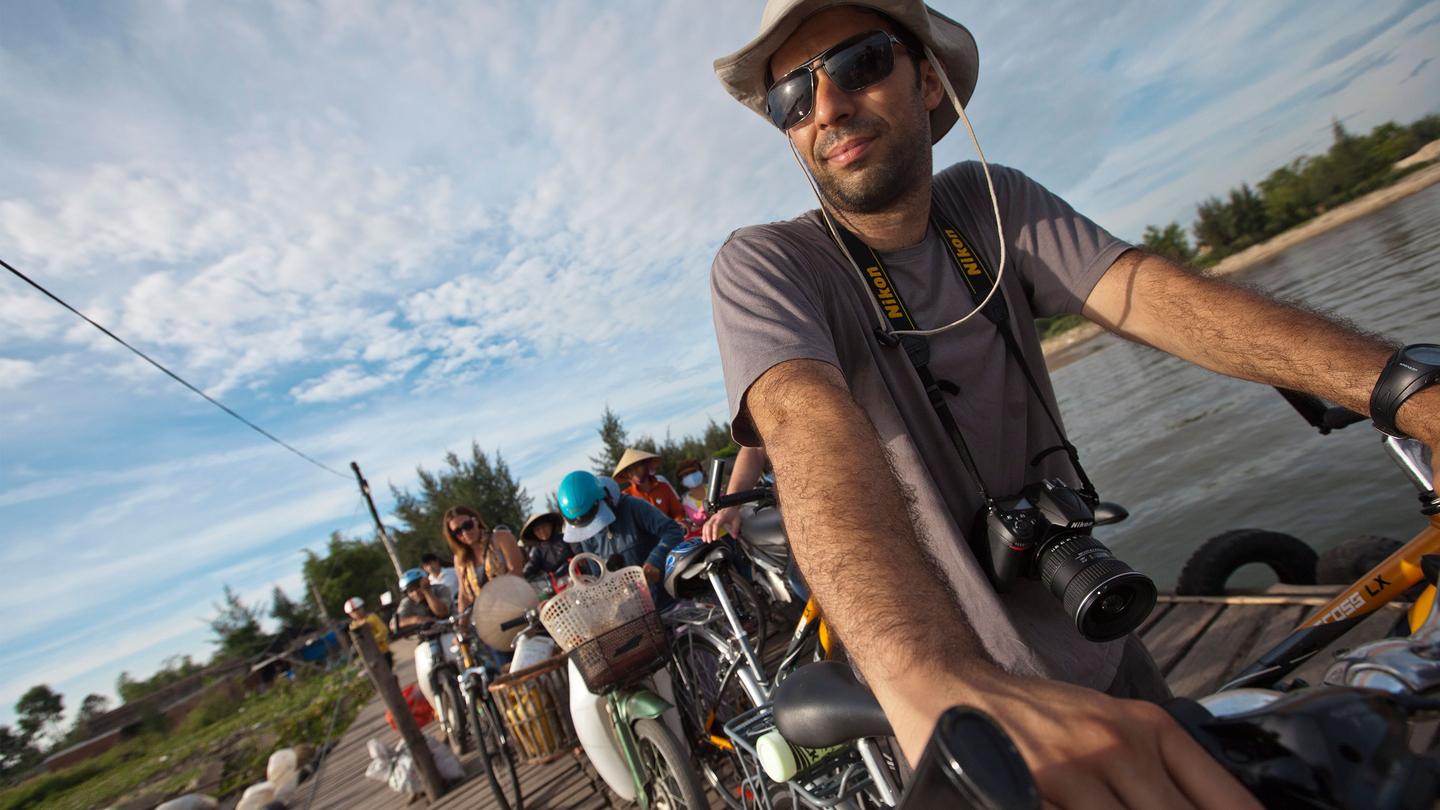
Source | Internet
2. Pack light and opt for sustainable items
Your suitcase isn’t just baggage—it’s a carbon factor. Heavier loads make planes and cars work harder, burning more fuel. Pack like a pro: stick to versatile outfits (that black shirt goes with everything), ditch the “maybe I’ll need it” extras, and embrace reusable gear—a steel water bottle, a bamboo utensil set, a foldable tote. Even your sunscreen can join the party—reef-safe versions skip the chemicals that harm coral while you splash around.

Source | Internet
3. Prioritize sustainable accommodations
Where you crash at night can tip the carbon scales. Hotels often run on autopilot—lights blazing, AC humming, towels swapped daily. Here’s how to sleep greener:
- Pick eco-friendly accommodations: Look for stays that achieved certifications from LEED, B-Certified and Travelife since these organizations seriously assess energy-efficient buildings, renewable energy use, and waste reduction. You can read more about how to choose an eco-friendly accommodation in this article.
- Stay local and small: Boutique stays or homestays often lean lighter on resources. A study from Cornell University found that small accommodations in rural areas emit 30-40% less per guest due to lower energy demands and local sourcing. They’re cozier, more personal, and tend to blend into the community rather than dominate it. In some spots, community-based tourism, such as those ethnic villages in the mountainous area of Northern Vietnam, doubles as a low-impact stay and a cultural dive. And you can find more interesting community-based tourism destinations in Vietnam in this article.
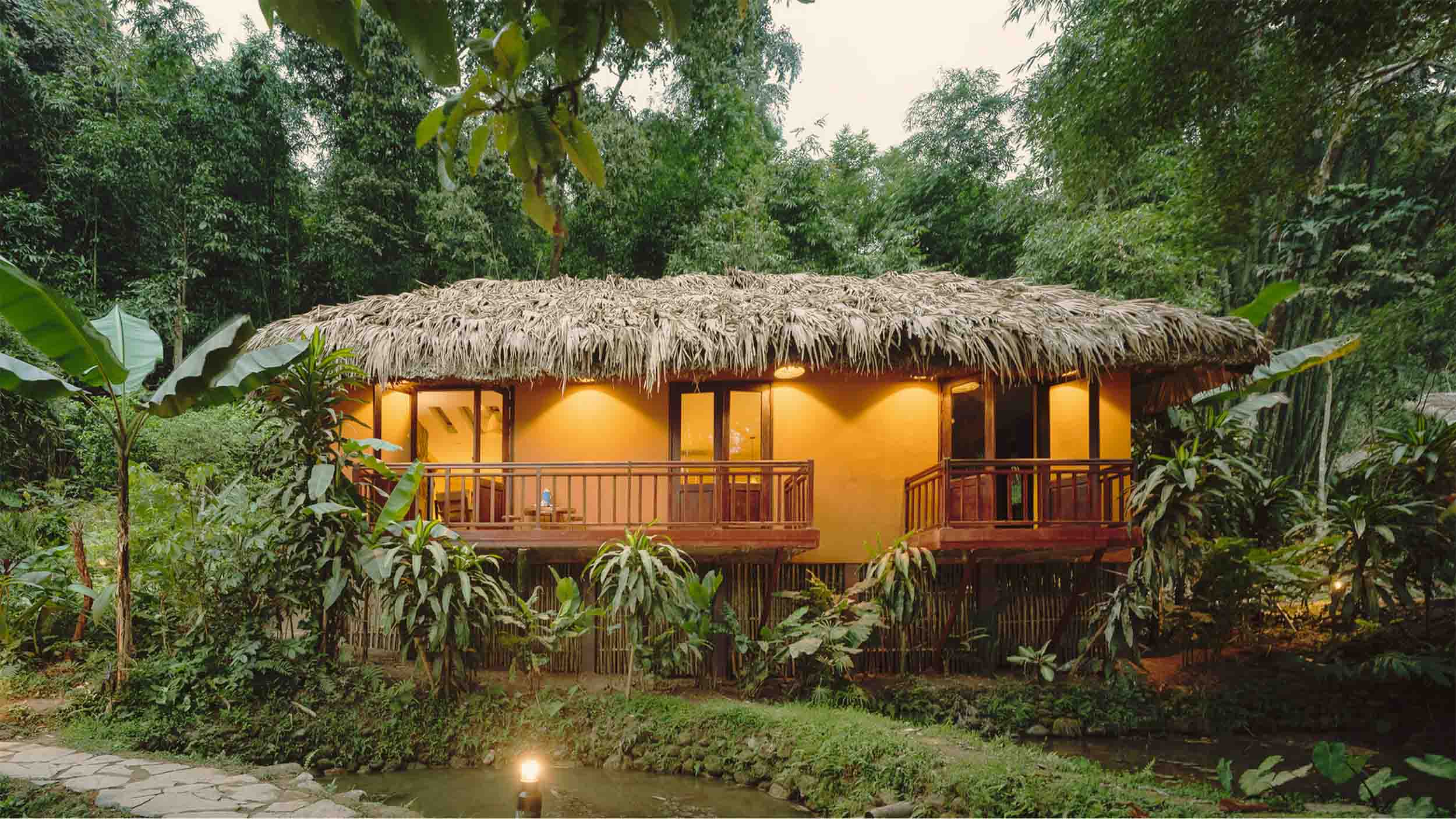
Source | Panhou Retreat, Ha Giang – Vietnam
4. Embrace slow travel
Slow travel is the art of savoring, not sprinting. Instead of racing through dozens of cities, snapping selfies and rushing off, linger in a few of them to trade surface-level sightseeing for a real connection. Fewer flights or long drives mean fewer emissions, and a nearby road trip or staycation works too.
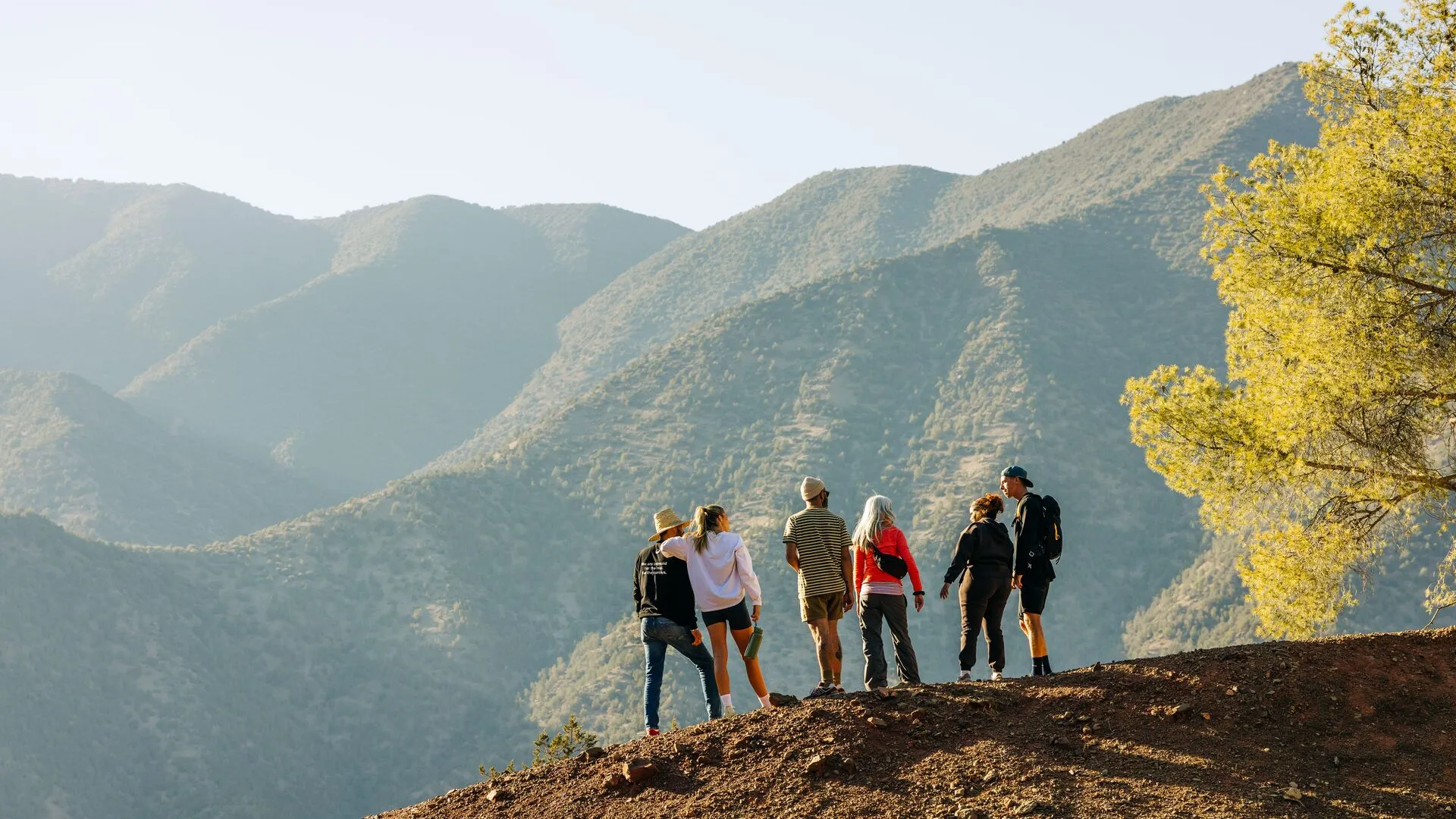
Source | Internet
5. Support conservation projects
Give back while you’re out there. Volunteer with a wildlife sanctuary—like Thailand’s elephant havens that ditch rides for ethical care—or join the bear rescue center in Ninh Binh, Vietnam to raise awareness of poaching. Your time (and sometimes a small fee) fuels habitat protection, keeping destinations wild and alive. It’s travel with a purpose, and the stories you’ll bring home beat any souvenir.

Source | Bear Sanctuary Ninh Binh – Vietnam
6. Eat like a local
Food’s a travel highlight, and it can be a carbon cutter. Skip the imported burger flown halfway around the world and dive into local, seasonal eats—think mango sticky rice from a Bangkok stall or a bowl of Bun Cha Hanoi. Hit markets or street vendors where ingredients didn’t rack up frequent flyer miles. It’s tastier, supports farmers, and slashes the energy tied to shipping.

Source | Internet
Make travel footprint a mindset, not a chore
Reducing your carbon footprint isn’t about swearing off travel or overthinking every step. It’s a mindset—start with one swap, like a train instead of a flight, or a guesthouse over a hotel chain. These choices don’t just trim emissions; they often make your trip more vivid. The planet shifts slowly, but your habits can shift fast, and the payoff’s worth it.
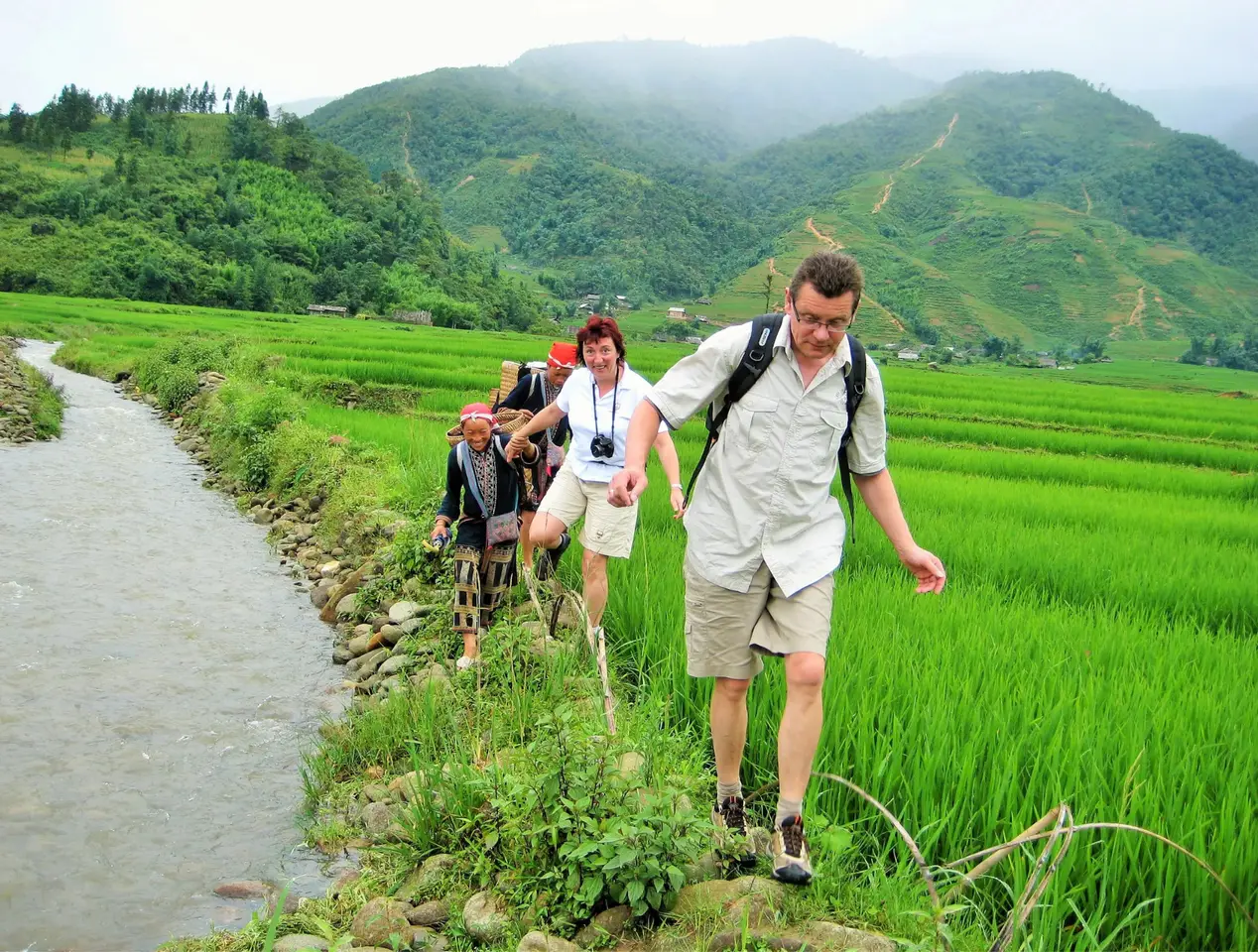
Source | Internet
Conclusion
Your carbon footprint might tag along on every journey, but you’ve got the reins to make it lighter. By rethinking transport, packing smart, choosing sustainable stays, slowing down, giving back, and eating local, you’re not just cutting emissions—you’re weaving a travel tale that’s kinder to the Earth.
At Travel Sense Asia, we prioritize sustainability to arrange green experiences for travelers. If you are eager to reduce your carbon emissions in the next trip, simply share your preferences with us here, and we’ll take care of the rest.





















